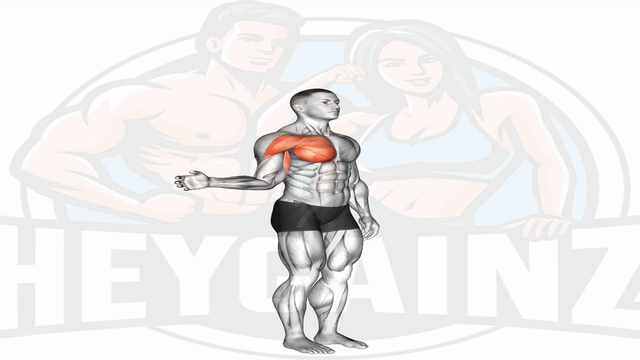
Instructions:
- 1Stand straight with your arms down by your sides
- 2Bend your elbow so your hand is in front of your waist
- 3Rotate your shoulder, moving your hand away from your body to the side
- 4Hold this position for a few seconds
- 5Return to the starting position and repeat
Tips:
- Keep your arm close to your body throughout the exercise
- Don't rush through the movement, take your time
- Chose one side to complete all of your reps before switch to the other side
Understanding Shoulder Medial Rotation
The shoulder medial rotation is a crucial movement that primarily targets the shoulders while utilizing your body weight. This exercise is significant for enhancing strength and flexibility in the shoulder joint, which can lead to improved performance in various physical activities.
Muscles Involved
During the shoulder medial rotation, several muscles play a vital role. These include:
- Subscapularis – a key muscle that ensures proper internal rotation.
- Teres Major and Latissimus Dorsi – assisting in the movement and stabilization of the shoulder.
Range of Motion
Understanding the shoulder medial rotation range of motion is essential for maximizing the benefits of this exercise. A normal shoulder medial rotation typically ranges from 70 to 90 degrees, depending on individual flexibility and anatomy. Tools like a goniometer can be used to measure this range accurately.
Benefits of Shoulder Medial Rotation Exercises
Incorporating shoulder medial rotation exercises into your fitness routine can significantly enhance joint stability, improve posture, and reduce the risk of shoulder injuries. They are particularly beneficial for athletes or individuals who engage in overhead activities.
Dealing with Pain
If you experience shoulder medial rotation pain, it's essential to consult a healthcare provider. The discomfort might arise from overuse or improper form during your exercises. Implementing proper techniques and gradually increasing intensity can help mitigate this issue.
Conclusion
Practicing shoulder medial rotation regularly not only supports athletic performance but also contributes to daily functional movements. Whether you're an experienced athlete or a beginner, integrating these exercises into your routine can lead to significant improvements in your overall shoulder health and mobility.